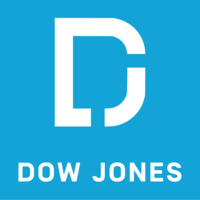Citigroup Projects Brent Crude Prices Could Fall to $55/Bbl by Late 2025 — OPIS
Citigroup analysts are projecting Brent crude will average $78/bbl in the second quarter and could continue to slide to $55/bbl by late next year.
The bank in a Sunday report said it continues to see a "spiky" first quarter for oil prices, thanks to crude supply and refinery disruption risks. The analysts said they expect OPEC+ will keep current production cuts in place through December, but still advised oil producers to hedge 2025 output in advance of what may be a sharp drop in prices.
The report predicted Brent will average $78 a barrel in the second quarter before sliding to $74/bbl in the third quarter and $70/bbl in the fourth quarter. Citi's 2025 oil outlook is surprisingly bearish, with the bank forecasting a Q1 price of $65/bbl, followed by an average of $60/bbl in the second and third quarter. The price will then drop to $55/bbl in Q4, the bank said.
Some of the forecast values are as much as 28% below the forward futures' curve. Citi said it expects West Texas Intermediate crude will remain at about a $5/bbl discount in the current quarter, then narrow to $4/bbl for the remainder of this year and through 2025.
The bank, which has consistently recommended producers hedge 2025 output, acknowledged that the amount of production under hedges has declined. Before the pandemic, U.S. and Canadian producers would hedge up to 45% of expected volumes, but that has declined to about 20% in recent years. Still, Citi said it believes crude oil hedging will increase later this year.
The bearish tilt is tied to concerns about OPEC+ spare capacity and new production from non-OPEC countries. OPEC+ spare capacity has risen by about 2 million b/d from pre-Covid-19 levels, it said.
While the bank's analysts acknowledged supply risks related to Israel, Iran, Iraq, Libya and Venezuela, they suggested Saudi Arabia, the United Arab Emirates, Kuwait and Russia could easily provide more barrels if needed. The UAE in particular has had significant capacity gains since the OPEC+ cuts began, the bank said.
For non-OPEC producers, the bank predicted output will rise this year by 500,000 b/d in the U.S., 200,000 b/d in Canada, 400,000 b/d in Brazil and 150,000 b/d in Guyana. Each country also will likely realize additional increases next year, Citi said.
While the bank said it doesn't expect upstream capital expenditures to approach peaks seen over the last decade, it believes the lower spending will be offset by productivity gains.
Critical to the bearish view is the assumption that global demand growth will slow, thanks in part to increased electric vehicle use and weaker economic conditions.
Further, Citi said it believes global refining runs will rise in the second half of 2024, predicting that about 800,000 b/d of distillation capacity will come online between Q3 2023 and Q3 2024, along with 600,000 b/d of capacity upgrades. The report also is optimistic about the 2024 driving season and doesn't see Nigeria's Dangote refinery as a factor until later this year when the facility's reformer comes online.
The bank also repeated its earlier view that a second Trump Administration "would likely be bearish for oil and gas on net," saying it would expect renewed trade tensions that would impact overall demand, particularly for diesel.
Citi was moderately bullish on natural gas. Despite weaker first-quarter, the report predicted lower prices will lead to some production being shut. It predicted Henry Hub prices next year at about $2.50/MMBtu with European and Asian numbers of $12.90/MMBtu and $15/MMBtu.
This content was created by Oil Price Information Service, which is operated by Dow Jones & Co. OPIS is run independently from Dow Jones Newswires and The Wall Street Journal.
--Reporting by Tom Kloza, tkloza@opisnet.com; Editing by Jeff Barber, jbarber@opisnet.com
(END) Dow Jones Newswires
March 18, 2024 12:48 ET (16:48 GMT)
Copyright (c) 2024 Dow Jones & Company, Inc.-
What History Tells Us About the Fed’s Next Move
-
What’s Happening In the Markets This Week
-
Alphabet’s New Dividend: What Investors Need to Know
-
Going Into Earnings, Is Palantir Stock a Buy, a Sell, or Fairly Valued?
-
Going Into Earnings, Is Eli Lilly Stock a Buy, a Sell, or Fairly Valued?
-
What’s the Difference Between the CPI and PCE Indexes?
-
5 Stocks to Buy That We Still Like After They’ve Run Up
-
Markets Brief: Stocks Are Starting to Look Cheap Again
-
AbbVie Earnings: Next-Generation Immunology Drugs Help Offset Humira Biosimilar Pressure
-
Exxon Earnings: Ignore Earnings Shortfall as Long-Term Growth and Improvement on Track
-
American Airlines Earnings: We See Costs Overshadowing Market Share This Year
-
Snap Earnings: Advertising Growth and Snapchat+ Drive Monetization
-
STMicro Earnings: We Still See an Attractive Margin of Safety Despite a Poor First-Half Forecast
-
Alphabet Shares Surge on Strong Earnings, Dividend Surprise
-
Microsoft Earnings: Firm Beats Forecasts on Strong AI and Cloud Demand
-
PG&E Earnings: Near-Term Regulatory Certainty Supports Industry-Leading Earnings Growth

